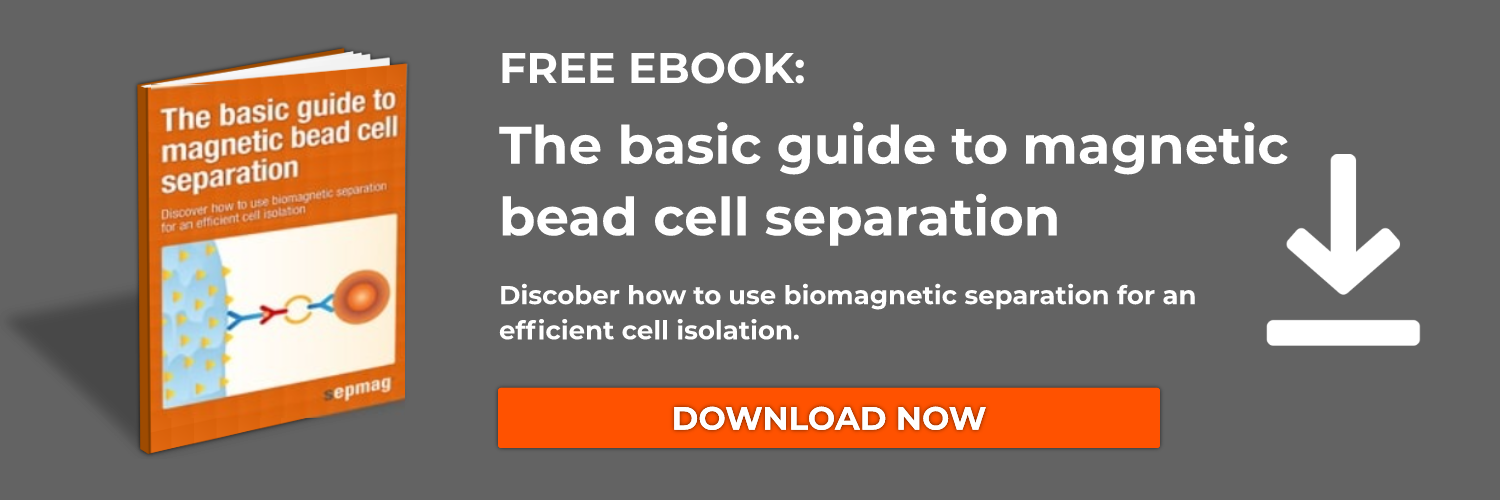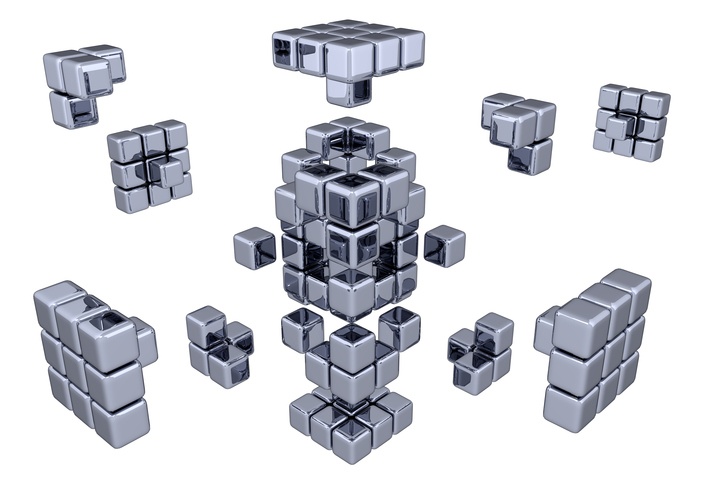Cell isolation is a critical step in the biomedical science and research sector and has been employed in in-vitro diagnostic tests and biological samples. The procedure of cell isolation lies on the specificity of a certain antibody toward its antigen. In recent decades magnetic beads have been implemented for the immunomagnetic separation protocols using both the superparamagnetic properties and antibody-antigen specificity which can be tuned to the experimental goal, and can produce high yields and highly enriched targets when used properly. Basically, cells of interest possess unique identifying surface antigens for the targeting beads. The immunomagnetic separation protocol follows these general steps:
- Identify the target and characterize the unique surface antigens.
- Choose a superparamagnetic bead that can be modified and functionalized with an antibody specific to the antigen on the target.
- Incubate the functionalized superparamagnetic beads with the sample.
- Isolate the target through magnetic separation.
Superparamagnetic beads
Magnetic beads are a collection of uniform particles of 500 nanometers - 500 micrometers in diameter which are typically made with composites containing nanoparticles of magnetite and iron oxide. Magnetic beads demonstrate superparamagnetic behavior, meaning that they are not innately magnetic, but become magnetized when placed into a magnetic field. This property is useful for magnetic separation as the movement of the beads can be controlled for the collection and isolation of the cell/entity of interest.
These beads can be functionalized with surface coating moieties such as proteins A or G that bind antibodies, or can also be biotinylated for the attachment of antibodies through biotin-streptavidin affinity. Beads are commercially available with pre-attached antibodies.
.
Positive vs. negative immunomagnetic separation
Generally, there are two types of immunomagnetic separation protocols: positive and negative separation. In positive separation, magnetic beads are surface-coated with an antibody having affinity toward a specific target cell – “antigen” – to form a bead-target conjugate. The conjugate is exposed to an external magnetic field and isolated by magnetic separation and the remaining contaminating solution is discarded. Positive separation is useful for a target with a unique surface antigen hence the chance of non-specific binding is minimized.
On the other hand, in negative separation magnetic beads are surface-coated with various antibodies that specifically bind to non-target cells. Non-target cells are removed by magnetic separation while the remaining solution still contains the target cell. Negative separation is useful when the specific surface antigen is still unidentified, or when the presence of magnetic particles on the target cell could hinder downstream procedures..
Magnetic separation rack
Traditional block magnetic separation consists of a permanent magnetic block placed next to the container holding the sample. The magnetized magnetic particles move toward the magnet when a magnetic force is applied and are collected at the side of the containing vessel. The downfall of this setup is the magnetic particles farthest from the magnet experience very weak force, while the cells closest to the magnet are saturated by a big magnetic force that predisposes them to cell membrane damage. However, advanced biomagnetic separation applies a constant magnetic force all over the containing vessel avoiding the common issues of the classical magnetic racks such as magnetic bead aggregation. Using the advanced separation racks, magnetic force does not vary with distance which offers higher yield and purity as for immunomagnetic separation protocols.
Conclusion
With recent discoveries and methods in the biomedical sector, new technologies and equipment have emerged to meet the industrial and scientific demands and immunomagnetic separation techniques is an example. When designing an immunomagnetic separation protocol it is important to modify beads’ properties (e.g. surface functionalization) and the type of separation rack employed. When all the components are properly tuned to the experimental goal it is possible to achieve accurate enrichment of the target in a short separation time.
Related news
- Janus particles synthesis self assembly physical properties and applications
- Biphasic janus particles with nanoscale anisotropy
- Cell separation based on cell density




